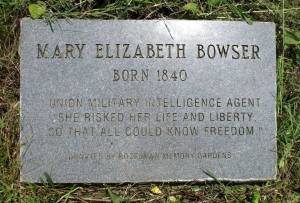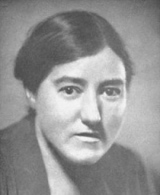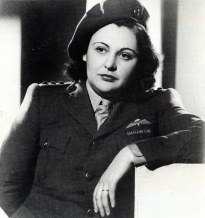Many of the women who served as spies in wartime took their secrets to the grave and were known only to their contacts. They came from all backgrounds and, while some served in the military, others were journalists, actresses and ordinary people doing extraordinary work. They demonstrated courage and inventiveness and helped alter the course of war with their work.
If one were asked to name a female spy Mata Hari would probably come to mind. Although her real name was Margaretha Geertruida Zelle McLeod, that is most likely a name that no one knows. The name Mata Hari became synonymous with female spy and her legacy portrayed women spies as seductive temptresses who would do anything to extract information from the enemy.
The truth about wartime female spies is that they were women who risked everything while leading double lives in dangerous situations. It has been said that their successes stemmed from their emotional intelligence, their nurturing instinct and their listening skills. However, their gumption, bravery and patriotism should also be highlighted.
InspiredByMyMom.com has chosen to bring notice to the following female wartime heroes in honor of Women’s History Month this year.
 It is not known exactly when Mary Elizabeth Bowser was born but her memorial stone shows 1840. History tells us that she became a freed slave and worked with her mistress Elizabeth Van Lews, also a spy, during the U.S. Civil War. When the war broke out, the Van Lews family brought food, medicine and books to Union soldiers at the nearby Libby Prison in Virginia while Mary conveyed messages between the prisoners and Union officials and helped prisoners escape. Mary relied on an informal network of women and men, white and black, all drawn from the clandestine Unionist community to help her.
It is not known exactly when Mary Elizabeth Bowser was born but her memorial stone shows 1840. History tells us that she became a freed slave and worked with her mistress Elizabeth Van Lews, also a spy, during the U.S. Civil War. When the war broke out, the Van Lews family brought food, medicine and books to Union soldiers at the nearby Libby Prison in Virginia while Mary conveyed messages between the prisoners and Union officials and helped prisoners escape. Mary relied on an informal network of women and men, white and black, all drawn from the clandestine Unionist community to help her.
At some point during the first couple years of the war, Mary succeeded, with Miss Van Lew’s assistance, in getting a position as a servant in the Confederate White House. Under this humble and overlooked guise, Mary became privy to information intended only for Confederate President Jefferson Davis.
The Confederate leadership felt no need to guard their conversations in the confines of the residence and no effort was made to keep Mary from seeing secret documents since it was assumed that she was illiterate. Due to this false assumption, she was able to gather sensitive information at all times and Mary Bowser was always on the lookout for information. It was reported that “she had a photographic mind. Everything she saw on the Rebel President’s desk she could repeat word for word.”
As with most spies during war, all records of Mary’s work were destroyed by the War Department to protect her from the retaliation she would have faced if the extent of her service were uncovered. Because of this, very few details are known about her specific activities during the war.
In 1995, Mary was honored by the U.S. Government for her efforts in spying and was inducted in the “U.S. Army Military Intelligence Corps Hall of Fame”.
Mabel Beatrice Elliott was born in the U.K. in 1885. After attending a private school in London, she studied at a German convent school in Holland where she acquired a fluent knowledge of German and Dutch. When WWI broke out in 1914, she was working as a foreign correspondent. She immediately offered her services to a newly established branch of the British War Office known as Postal Censorship.
It was not long before she was promoted to Deputy Assistant Censor and, while in charge of a room of examiners, her keen observation skills led her to suspect that an apparently innocent letter contained invisible writing. On applying heat to the paper she discovered the secret message of a German spy. Upon discovery of his activities, he hanged himself in Brixton prison, in England, leaving a confession that he was a German officer. Shortly afterward she again discovered secret messages in the letters of two more German agents and this evidence led to their conviction.
Following the war, she worked for 15 years for the Royal Society of Chemistry as indexer and business manager for The Analyst, a scientific publication for analytical chemists published by the society.
At the outbreak of WWII, Mabel once again threw herself into war work and played a prominent part in the activities of the W.V.S. (Women’s Voluntary Service) acting as an interpreter. She also passed the British Red Cross Society examinations and threw all her spare time into nursing. Unfortunately she did not live to see the end of WWII as she passed away in January 1944 having dedicated herself to the war effort.
“Although her vigilance may have prevented an invasion by the Kaiser, she was never recognized for the coup in her own lifetime,” said a news release from the London-based Royal Society of Chemistry recognizing her contributions on Armistice Day (a.k.a. Remembrance Day) in 2011.
Born in 1912, Nancy Grace Augusta Wake ran away from her home in Sydney, Australia to work as a nurse. When she inherited a modest sum of money from an auntie, she travelled to New York and then to London where she became a journalist. By the 1930s, she was working in Paris & other European cities while personally witnessing the rise of the Nazi movement.
She was living in Marseille when Germany invaded. After the fall of France in 1940, she became a courier for the French Resistance and later joined an escape network to assist military personnel stranded in France. Her life was in constant danger, with the Germans tapping her phone and intercepting her mail. The Gestapo named her the “White Mouse” for her ability to elude capture.
By 1943, Nancy Wake was the Gestapo’s most wanted person, with a 5 million-franc price on her head. When the escape network was betrayed that same year she decided to flee and succeeded, on her sixth attempt, in crossing the Pyrenees to Spain.
Upon reaching Britain, Wake joined the S.O.E. (Special Operations Executive) and, on a dark night in April 1944, she was parachuted into the French province of Auvergne. There she became a liaison between London and the local French Resistance fighters. Her duties included allocating arms and equipment that were parachuted in and minding the group’s finances. She became instrumental in recruiting more members and making the maquis groups into a formidable force, roughly 7,500 strong. She also led attacks on German installations and the local Gestapo Head Quarters.
By the time Nancy Wake passed in August 2011, aged 98, her life had been immortalized in her book “The White Mouse” and several other biographical books along with a movie and a British television series.
If you enjoyed the HERstory of these women you may also like to read other stories in this series.
March is Women’s History Month – Part 4 – Women in AVIATION
March is Women’s History Month – Part 2 – Women in ART
March is Women’s History Month – Part 1 – Women in STEM



Reblogged this on Cogpunk Steamscribe.
LikeLike
Thank you for sharing this on your blog…
Have a great weekend.
LikeLiked by 1 person
Thank you for having such a great blog, making it easy to want to share content.
LikeLike
Each of these stories is inspiring in its own right, but I’m especially impressed with Mary Bowser – oh my what courage she must have had! Thank you so much for sharing the lives of these marvelous women.
LikeLike
So glad that you enjoyed reading about these fabulous women.
LikeLike
Great post! I have to admit that Nancy Wake’s story is very impressive. No wonder she was nicknamed White mouse!
LikeLike
Amazing & inspiring women all around us. Thank you for taking the time to read & comments.
LikeLike
Wow. This article parallels the influence and importance women have exerted (anonymously and quite often invisibly) throughout history. Thank you for bringing this to light Betty.
LikeLike
Appreciate your positive comments. I am enjoying learning about all these fabulous women and bringing their stories to you.
LikeLike
What incredible stories!
LikeLike